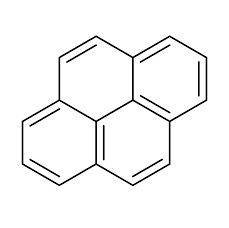 What is Pyrene?
What is Pyrene?
Pyrene is one of a group of chemicals called polycyclic aromatic hydrocarbons, PAHs for short. PAHs are often found together in groups of two or more. They can exist in over 100 different combinations but the most common are treated as a group of 15. PAHs are found naturally in the environment, but they can also be man-made. Pyrene is colorless crystal-like solid but can also look yellow. PAHs are created when products like coal, oil, gas, and garbage is burned but the burning process is not complete.
Uses
Most of the PAHs are used to conduct research. Like most PAHs, pyrene is used to make dyes, plastics and pesticides. It has also been used to make another PAH called benzo(a)pyrene.
Sources & Potential Exposure
You can be exposed to most PAHs in the environment, in your home and in the workplace. Because PAHs exist naturally in the environment, and they are man-made, you can be exposed in several ways. If you smoke cigarettes you can be exposed to pyrene since it has been found in tobacco and cigarette smoke. Exposure to other PAHs can occur by eating foods grown in contaminated soil or by eating meat or other food that you grilled. Grilling and charring food actually increases the amount of PAHs in the food. You could be exposed to pyrene by eating smoked fish or meats. It has also been found in surface water and drinking water. Pyrene has been detected in coal tar so if you work at a business that makes or uses coal tar you could be exposed to pyrene and other PAHs.There is no information available from studies on humans to tell what effects can result from being exposed to individual PAHs at certain levels. However, breathing PAHs and skin contact seem to be associated with cancer in humans.
Federal Regulations
The U.S. Environmental Protection Agency EPA has indicated that not enough information exists to classify pyrene as a cancer causing substance.

 Americas
Americas Europe
Europe Français
Français Deutsch
Deutsch Italiano
Italiano Español
Español
